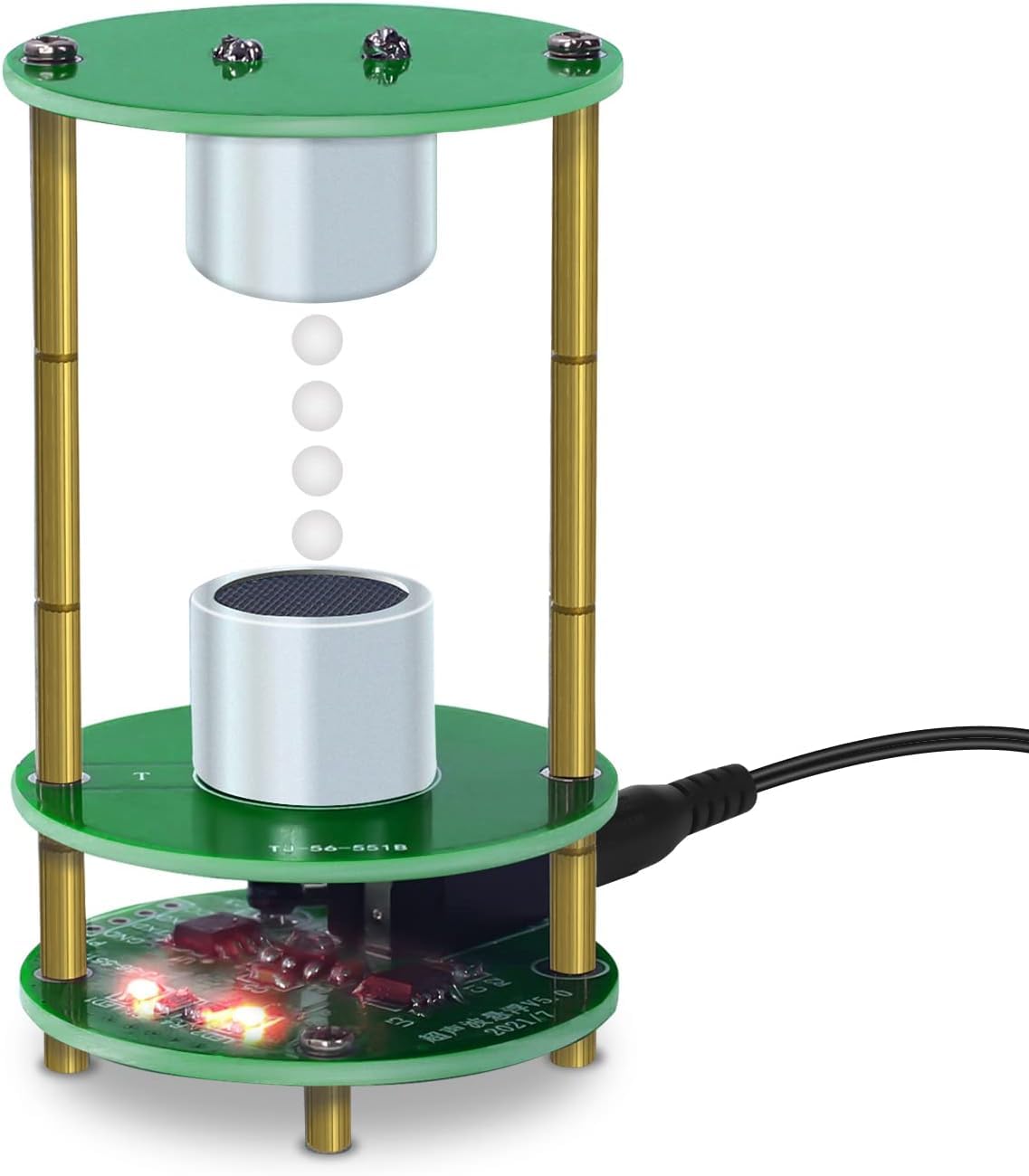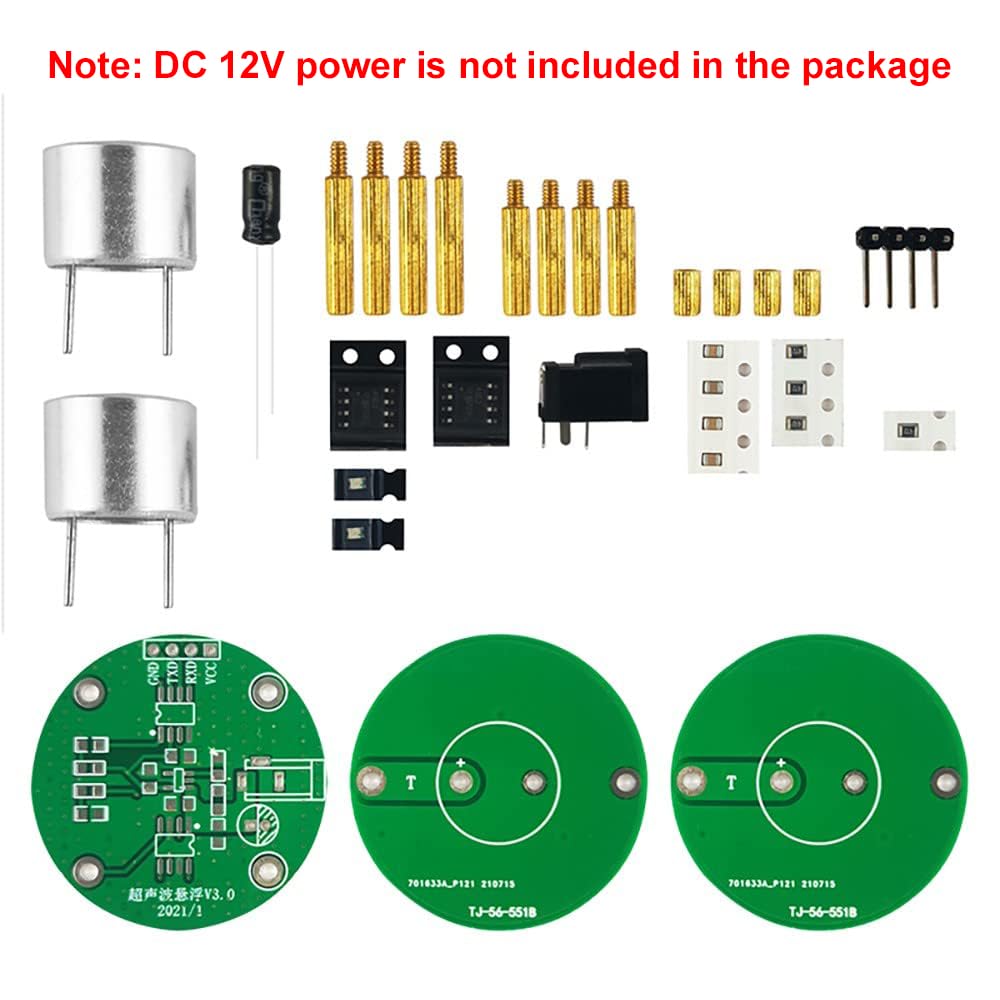






✨ Elevate Your Skills and Imagination!
The DIY Levitation Electronic Kit by Icstation is an innovative soldering project designed for both enthusiasts and educational purposes. This kit allows users to learn soldering techniques while creating a mesmerizing ultrasonic levitator. With 24-hour suspension stability, detailed instructions, and LED indicators, it's perfect for family bonding and skill development.
| Upper Temperature Rating | 85 Degrees Celsius |
| Manufacturer | IS |
| Part Number | GY20451-1 |
| Item Weight | 0.704 ounces |
| Product Dimensions | 1.65 x 1.65 x 2.44 inches |
| Country of Origin | China |
| Item model number | Green |
| Size | 1.65 x 1.65 x 2.44 inches |
| Color | Levitator Soldering Kit |
| Style | Levitator Soldering Kit |
| Material | Plastic |
| Batteries Included? | No |
| Batteries Required? | No |
F**N
Probably NOT for beginners. Very small components and you need a steady hand.
The media could not be loaded. This is an interesting, and challenging, project. I would not recommend it for real beginners, due to the small size of the SMD parts that make up the majority of the components. But if you're a fairly accomplished builder of electronic kits, it's a great way to up your game and get into working with these now-common tiny components.The kit comes with 3 circuit boards, 2 of which hold only the ultrasonic emitters, and one holds the actual working circuit, along with the components themselves and the hardware to put it all together. The last photo above shows the SMD (Surface Mount Device) parts along side a ruler to show just how small they are. (You will also need a 12vdc transformer to power the device when completed.)It definitely takes a steady hand to place and solder these components on the circuit board. The instructions are pretty good, though you definitely need to go online and download the additional instructions referenced with QR codes in the kit instructions.They include photos (which the printed docs do not) and a better description of how to build the kit. In the ad for the kit, there is a 20 minute video showing someone actually constructing it, and I highly recommend watching it first.The bottom line, though, is that I finished it, and IT ACTUALLY WORKS!The device creates a standing ultrasonic wave between two emitters, and you can then suspend tiny foam balls (included in the kit) at the various nodes in the invisible wave.The construction of the kit is, as I said, a bit challenging. You will DEFINTELY need a magnifier (if not a small microscope) to identify the various parts. They are marked, but the markings can be difficult to read.You'll also need tweezers (or very fine point needle-nose pliers), a fine-point soldering iron and electronic solder, some de-soldering wick or a suction device makes things easier, as does a bit of soldering flux/paste.If you follow the instructions step-by-step, in the end you'll have an interesting little conversation piece that actually does demonstrate a scientific principle.It would be difficult (and probably very frustrating) for a beginner (especially a child) to complete this device successfully. The close spacing of the leads on the components requires precise placement and careful soldering, while being careful not to overheat the components.I am a pretty experienced board builder, and have done a lot of soldering with standard size components. But still, I managed to destroy one of the parts (one of the miniscule LED's) while attempting to solder it. It stuck to the soldering iron, and in a few seconds, before I could remove it, it melted and was useless. Fortunately, that particular LED is not necessary for the operation of the circuit, so it still worked when completed.I was interested to work with these SMD devices for the first time without risking a lot of $$, since I have only worked with much larger "through-hole" construction before. It was a definite learning experience, one which I enjoyed, and which provided no small measure of satisfaction when I plugged it in and it actually worked! A fun project!
A**V
First one did not work
Okay firstly it did not work.I have been soldering and micro-soldering for years.I have all the gear, reflow station, microscope ect... it took me 5 mins tops. The smd components are small as typical.You will need a soldering iron at the least, I don't recommend this if you are practicing.This is obviously not a practice kit, more like manufacturing saved money by not having this assembled or someone is just selling them as diy kits.Anyways, yeah it didn't work I hand reflowed everything and checked the joints all where correct.One thing I noticed in the PDF the 2 soic-8 microchips are image to name swapped.Example: Microchip A B-Connect A but using image B in PDFConnect B but using image A in PDFAnyways having an extra kit sent, disappointed but maybe the 2nd will work.
A**.
Fun little toy. When finished you will have some pretty good SMD Soldering skills.
The media could not be loaded. To start a little overwhelming with all the little parts. After you sort them all out and start building it is actually a lot of fun.SMD = Surface Mount Device.You start out with an 8 pin SMD IC, tack one pin, make sure the rest align and finish it up soldering the rest. Then two more ICs, and several resistors, capacitors and two LEDs, all SMD devices and real small. It all goes well with thin solder and a fine point soldering iron. A few pins I added a little too much solder so I just went back with a clean tip and touched it, that removed the excess solder.I would recommend the first step is clear off a large area to work in. Only take parts out of their holders when you are ready to install them, they are small and it doesn't take much to misplace them. Identifying the parts is easy, the ICs are marked, the rest: only 1 10K, 2 LEDs, 3 5.1K and caps are 4 in the strip. I was working on my cluttered workbench and one LED vanished.Pictures:1) Finished unit2) Finished main board3) Working with 2 ballsVideo:1) Added a small piece of plastic and it stared spinning, then added a ball and it was stable, very cool.If you want to get into SMD Soldering this is a great kit, I had a lot of fun and now I have a little toy on my desk that often starts conversations.I would recommend this kit to someone with basic soldering skills that's wanting to get into SMD Soldering.
A**E
Not for beginners by any means.
The components in this kit are absolutely tiny, almost microscopic. You’ll need tiny tweezers and magnification to put this one together. Overall, cheap quality compared to other kits out there.
Trustpilot
2 weeks ago
1 month ago